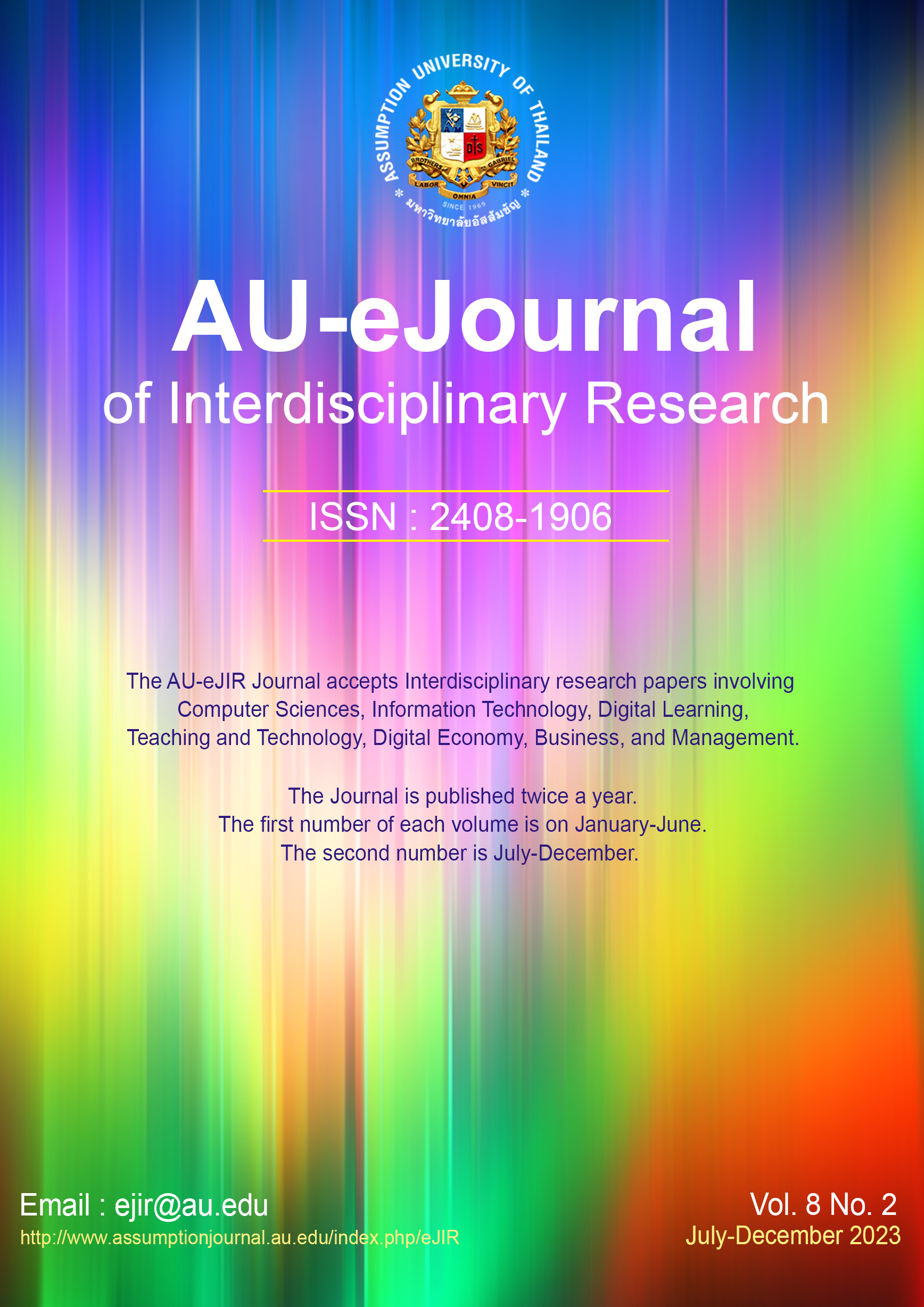Is Sorry Enough? The Role of Brand Recovery in Brand Forgiveness and Re-engagement after a Brand Hate Incident: The Case Study of Dolce & Gabbana
Keywords:
Brand hate, Brand recovery, Brand forgiveness, Brand re-engagement, Repurchase intentionAbstract
This study aims to explore how brand hate, brand recovery, brand forgiveness, repurchase intention, and brand re-engagement interact and influence each other in the context of the Dolce & Gabbana brand hate crisis. The objectives of this research were to elucidate the significant influence of brand hate on brand recovery within the context of Dolce & Gabbana. To delineate the significant influence of brand recovery on brand forgiveness within the case study of Dolce & Gabbana. To expound upon the significant influence of brand forgiveness on repurchase intention as observed in the case of Dolce & Gabbana. To clarify the significant influence of brand forgiveness on brand re-engagement within the context of Dolce & Gabbana. The data was collected from 390 Chinese luxury product consumers residing in China via online questionnaires. The data analysis employed descriptive data analysis techniques to summarize the characteristics of the variables and inferential analysis techniques to test the hypothesis using simple linear regression. The findings of this study indicate that brand hate negatively affects brand recovery, and brand recovery positively influences brand forgiveness. Moreover, brand forgiveness has a significant positive effect on repurchase intention. Additionally, there is a significant positive relationship between brand forgiveness and brand re-engagement. These results suggest that Brand Recovery is a crucial factor for mitigating Brand Hate and restoring customer trust and engagement.
References
Allatas, H., Karyatun, S., & Digdowiseiso, K. (2023). The Influence of Product Quality, Price Perception, and Promotion on The Purchase Decision of Aqua Brand Drinking Water in The Jakarta Area Final Project. Journal Syntax Admiration, 4(4), 517-530.
Allatas, V., Chandrasekhar, A. G., Mobius, M., Olken, B. A., & Paladines, C. (n.d.). Designing Effective Celebrity Messaging: Results from a Nationwide Twitter Experiment Promoting Vaccination in Indonesia.
https://web.stanford.edu/~arungc/ACMOP.pdf
Bain & Company. (n.d.). Growth in uncertain times: China’s share of global luxury market reaches new high despite COVID-19.
Bisen, A., & Nuangjamnong, C. (2021). An Investigation on the Influence of Advertising on Consumer Based Brand Loyalty. A Case Study on Sport Shoe Business. AU-GSB e-Journal, 14(1), 26-36. https://doi.org/10.14456/augsbejr.2021.3
Bloomberg. (n.d.). Dolce & Gabbana Bets on an Independent Future After China Stumbles.
Cronbach, L. J. (1951). Coefficient alpha and the internal structure of tests. Psychometrika, 16(3), 297-334.
https://doi.org/10.1007/BF02310555.
Cuong, T. D. (2021). The Effect of Brand Image on Client Loyalty: Mediating the Impact of Client Satisfaction at Footwear Stores. In Proceedings of the 3rd International Electronics Communication Conference 2021, 63-67.
https://dl.acm.org/doi/abs/10.1145/3475971.3475982.
Farhat, Z., & Chaney, D. (2021). Introducing destination brand hate: an exploratory study. Current Issues in Tourism, 24(17), 2472-2488. doi: 10.1080/13683500.2020.1844160.
Fetscherin, M., Konecnik Ruzzier, M., Ivanov, S., & Ruzzier, M. (2023). Brand hate internationally: a validation study from Slovenia. Journal of international consumer marketing, 35(4), 436-447. doi: 10.1080/08961530.2022.2122102.
Gürce, M. Y., Tosun, P., & Pektaş, G. Ö. E. (2022). Brand love and brand forgiveness: An empirical study in Turkey. Journal of Marketing and Consumer Behaviour in Emerging Markets, 1(14), 22-39. doi: 10.7172/2449-6634.jmcbem.2022.1.2.
Hasani-Nasab, M. (2019). Investigation of the effect of the brand equity on the repurchase intention by mediation of the brand attractiveness and brand trust. ECORFAN Journal Mexico, 10(23), 19-33. doi: 10.35429/EJM.2019.23.10.19.33.
Hashim, S., & Ahmed, S. (2018). The moderating effect of brand recovery on brand hate and desire for reconciliation: A PLS-MGA approach. International Journal of Business and Society, 19, 833-850.
Hassey, R. V. (2019). How brand personality and failure type shape consumer forgiveness. Journal of Product & Brand Management, 28(2), 300-315.
doi: 10.1108/JPBM-09-2017-1563.
Hongthonga, P., & Jaroenwanit, B. (2020). Roles of Brand Forgiveness towards Brand Re-Engagement: The Case of Domestic Airlines. Athens Journal of Business and Economics, 1(3), 221-234.
https://doi.org/10.30958/ajbe.1-3-4 doi=10.30958/ajbe.1-3-4.
Husnain, M., Wang, Z., Poulova, P., Syed, F., Akbar, A., Akhtar, M. W., Akbar, M., & Usman, M. (2021). Exploring brand hate and the association between similar competitor offer and brand equity: a moderated-mediation model. Frontiers in Psychology, 11, 533216. doi: 10.3389/FPSYG.2020.533216.
Jaroenwanit, P., & Chueabunko, A. (2015). The power of forgiveness toward repurchases intention. BU Academic Review, 14(2), 118-134.
Jing Daily. (n.d.). Is China Finally Done with Dolce & Gabbana?. https://jingdaily.com/posts/dolce-and-gabbana-couture-china-irrelevance
Krejcie, R. V., & Morgan, D. W. (1970). Determining sample size for research activities. Educational and psychological measurement, 30(3), 607-610.
Ledin, A., Norell, L., & Thorell, J. (2016). How brand relationships affect brand forgiveness: A qualitative study within the retail industry in a Swedish cultural setting. https://www.diva-portal.org/smash/get/diva2:933003/FULL TEXT01.pdf
Lee, S., & Kim, T. (2023). Brand recovery after crisis: The interplay of relationship norms and types of brand apology in consumer responses to recovery efforts. Journal of Marketing Communications, 1-23.
doi: 10.1080/13527266.2023.2172601.
Rasouli, N., Rasoolimanesh, S. M., Rahmani, A. K., Momayez, A., & Torabi, M. A. (2022). Effects of customer forgiveness on brand betrayal and brand hate in restaurant service failures: does apology letter matter?. Journal of Hospitality Marketing & Management, 31(6), 662-687.
doi: 10.1080/19368623.2022.2043800.
Roy, S. K., Sharma, A., Bose, S., & Singh, G. (2022). Consumer-brand relationship: A brand hate perspective. Journal of Business Research, 144, 1293-1304.
doi: 10.1016/j.jbusres.2022.02.065.
Siamagka, N. T. (2023). Explaining consumer–brand forgiveness through the lens of narcissism. Marketing Intelligence & Planning, 41(3), 360-374. doi: 10.1108/mip-03-2022-0110.
Steiniger, L. (2016). Hate or forgiveness: how do online firestorms impact brand attitude? [Master's thesis]. University of Twente.
Tan, T. M., Balaji, M. S., Oikarinen, E. L., Alatalo, S., & Salo, J. (2021). Recover from a service failure: The differential effects of brand betrayal and brand disappointment on an exclusive brand offering. Journal of Business Research, 123, 126-139. doi: 10.1016/J.JBUSRES.2020.09.056.
Xu, M., & Nuangjamnong, C. (2022). Determinant Factors Influence the Purchase Intention through Balenciaga Handbags in the Luxury Product in China. International Research E-Journal on Business and Economics, 7(1), 30-43.
Zhang, Z., & Nuangjamnong, C. (2022). The Impact Factors Toward Online Repurchase Intention: A case study of Taobao e-Commerce platform in China. International Research E-Journal on Business and Economics, 7(2), 35-56.
http://www.assumptionjournal.au.edu/index.php/aumitjournal/article/view/6780.





